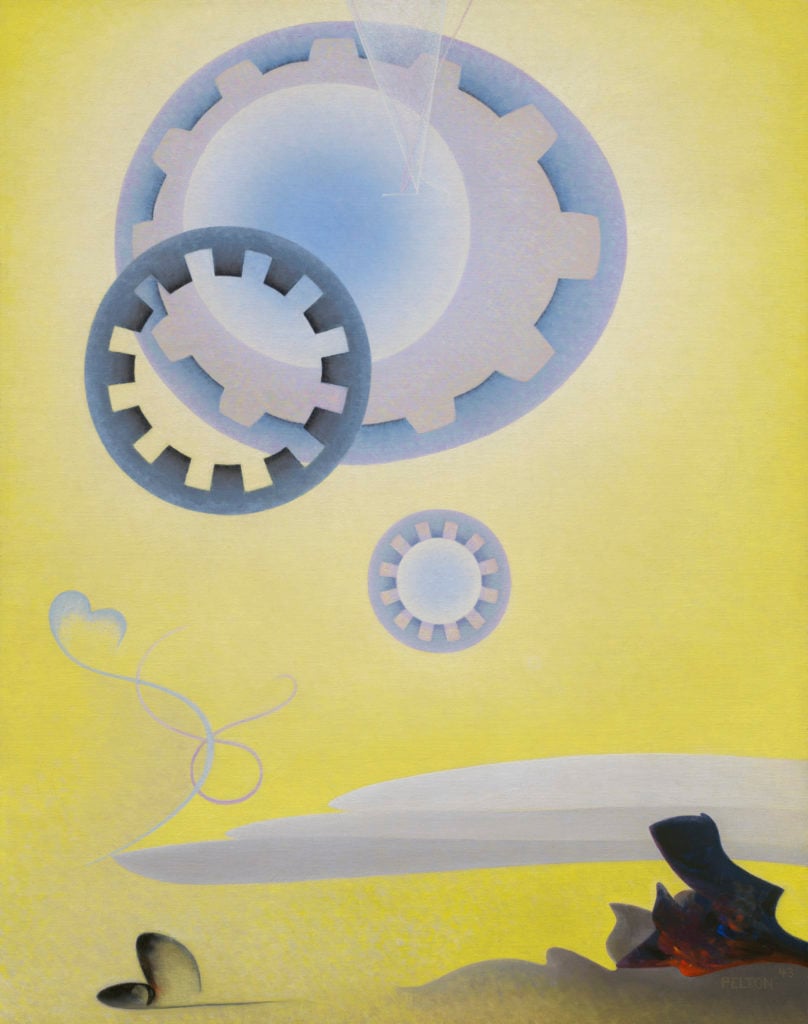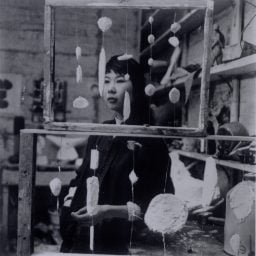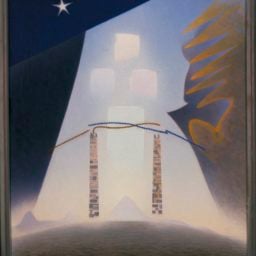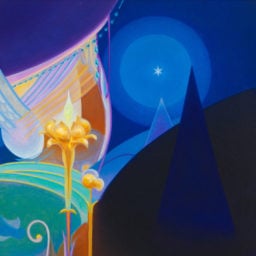Don’t feel bad if you haven’t heard of Agnes Pelton (1881–1961), an obscure but pioneering German-born American Modernist painter. An exhibition dedicated to her work just opened at the Phoenix Art Museum, but even the show’s curator Gilbert Vicario only came to know her work in 2015, when he first joined the institution.
“It’s a little embarrassing,” Vicario admitted to artnet News. “One of the first things that I did when I got here was to look at the collection and begin to understand it.” One of the standouts was a pair of Pelton paintings that the museum had acquired earlier that year. Intrigued, Vicario decided to take a closer look at her otherworldly abstractions.
He soon learned that Pelton had appeared in the Los Angeles County Museum of Art’s important 1986 exhibition “The Spiritual in Art: Abstract Painting 1890–1985” and was the subject of a traveling solo show that originated at the Palm Springs Museum of Art in 1995. There was even a canvas at the Des Moines Art Center, where he worked for six years before moving to Phoenix, that he had never known about because “it never saw the light of day.”
That so few people knew of Pelton’s work seemed an injustice, and one that Vicario could help right. “I couldn’t believe that no one was doing anything,” he said. Pelton, he believed, was a major opportunity for rediscovery. “With the younger generations of curators and scholars, there are interesting conversations happening around artists whose work has been marginalized for various reasons—and a lot of them are women.”
Once the show finishes its run in Phoenix, it will go on a national tour to the New Mexico Museum of Art this fall and the Whitney Museum of American Art in New York and California’s Palm Springs Art Museum in 2020.
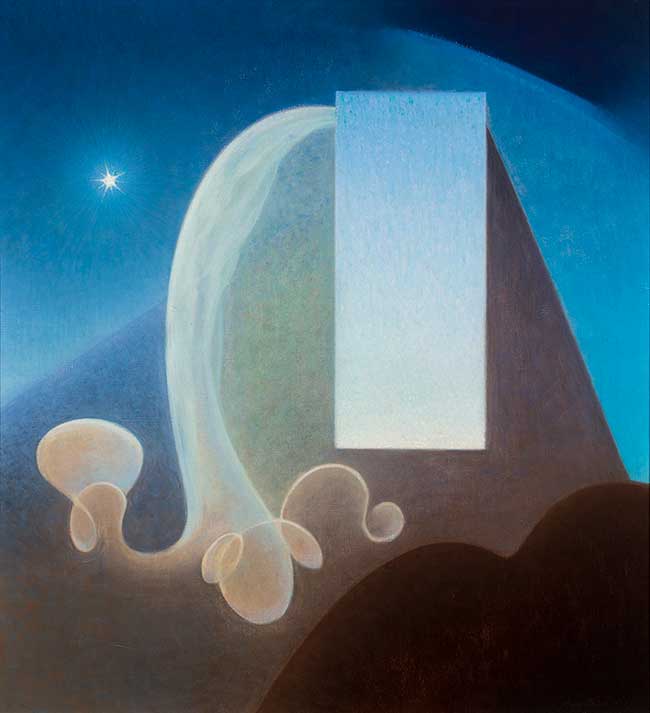
Agnes Pelton, Day (1935). Courtesy of the Phoenix Art Museum, Gift of the Melody S. Robidoux Foundation.
New Age Before New Age
A graduate of Brooklyn’s Pratt Institute, Pelton studied landscape painting with Arthur Wesley Dow, who also taught Georgia O’Keeffe. She showed her early Symbolist work in the seminal 1913 Armory Show (the same one where Matisse debuted his Blue Nude and Duchamp revealed Nude Descending a Staircase) before embracing abstraction in the 1920s.
Her mature work, untethered from representation and reality, became a visual manifestation of her interest in various spiritual pursuits: Agni yoga, numerology, astrology, faith healing, and the spiritualist teachings of the Russian occultist Helena Blavatsky.
“It’s the beginning of what we now call the New Age movement,” Vicario explained. In the exhibition, he places Pelton in the context of other spiritually inspired abstractionists, including the Swedish painter Hilma af Klint—who recently experienced her own rediscovery of sorts and is currently the subject of an acclaimed exhibition at the Guggenheim in New York—and Russian artist Wassily Kandinsky.
Pelton moved to the Southern California desert in 1931 and fell in love with the landscape. She spent the rest of her life in Cathedral City near Palm Springs and became a founding member of the Transcendental Painting Group based in Taos, New Mexico. The group’s creed was “to carry painting beyond the appearance of the physical world, through new concepts of space, color, light and design, to imaginative realms that are idealistic and spiritual.”
“In the 1930s, Pelton developed her own style. It was more earthbound, combining pure abstraction with landscape,” Vicario said. “This produced some very strange tableaux.”
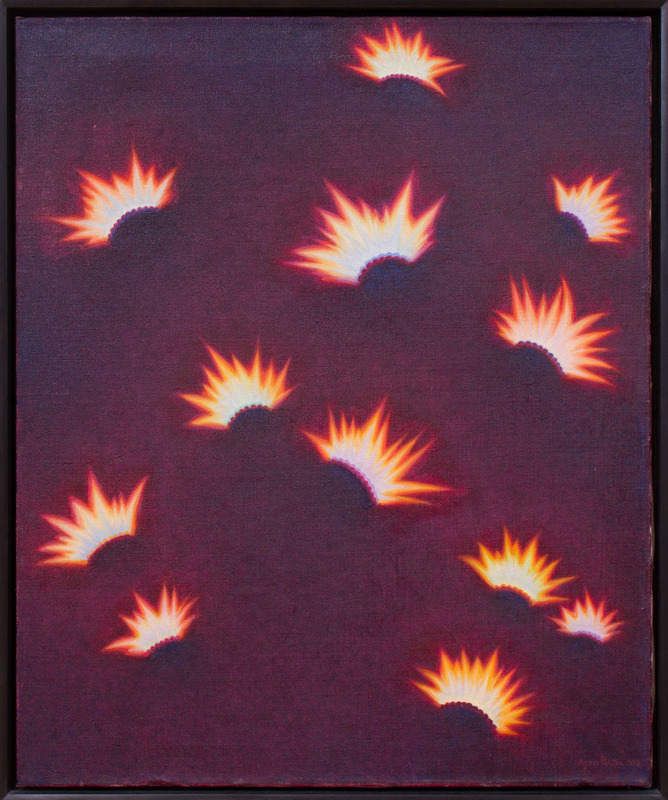
Agnes Pelton, Fires in Space (1938). Courtesy of Michael Rosenfeld Gallery.
Overlooked—But Not For Much Longer
Though Pelton’s work was well received in her lifetime, she never achieved widespread renown. “Pelton wasn’t terribly interested in marketing herself or in the business of art. She liked her solitude and her life in the desert,” explained Vicario. “Being isolated and not being connected to what was happening in New York was a great disadvantage to her career.”
The artnet Price Database puts Pelton’s auction record at just $27,500, set back in 1988, but none of her recorded auction sales appear to be for her abstract works. In 2017, the same 1961 Pelton landscape had two go-arounds on the auction block at Doyle New York, failing to sell the first time and fetching just $1,000 on the second try.
When one of her abstracts did come up for sale at New York’s Stair Galleries last February, the house set the pre-sale estimate at just $400–800—such a low figure that it was not recorded in the Price Database. Savvy bidders drove the hammer price up to $230,000, or $276,000 with premium. Titled Fires in Space, it was snapped up by New York’s Michael Rosenfeld Gallery and is included in the current exhibition in Phoenix. (Rosenfeld also brought some of Pelton’s work to Art Basel Miami Beach in December.)
Over the past decade, other art-world bigwigs have awoken to her importance. Major museums, including the MFA Boston and the Crystal Bridges Museum of American Art in Bentonville, Arkansas, have added Pelton’s work to their collections. Still, recognition has not come easily.
“There was a museum in Santa Barbara that had a white elephant sale and put one of her paintings out on the lawn and was trying to sell it for $40. A friend of hers happened to see this and ran to the bank to cash a check,” said Vicario. “When she came back, the price had dropped to $15.”
One difficulty in beefing up scholarship and awareness of Pelton’s work is a lack of documentation. “She produced about 100 abstractions,” said Vicario. “For about 40 of those, the whereabouts are unknown.” He has not lost hope, however: He expects that as word spreads of the exhibition, lost paintings may begin to surface.
“I think there’s going to be international interest in the work,” Vicario added. “This is really a show of discovery for a new generation, and having people learn about the work and embrace it.”
See more paintings from the show below.
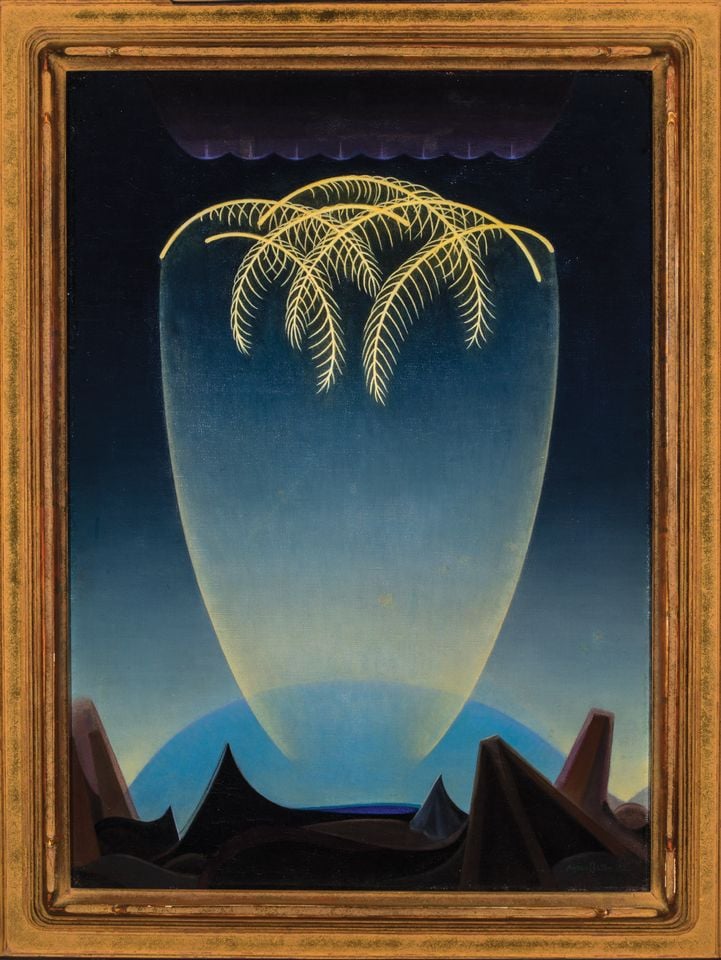
Agnes Pelton, Messengers (1932). Courtesy of the Phoenix Art Museum, gift of the Melody S. Robidoux Foundation.
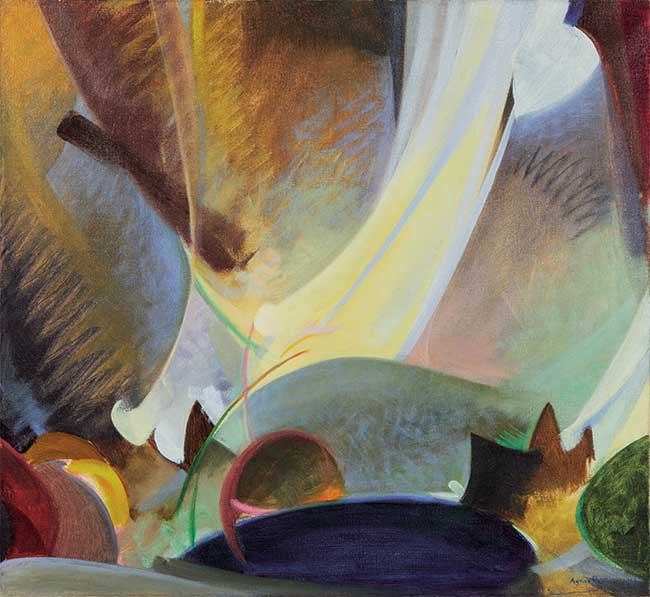
Agnes Pelton, Ray Serene (1925). Photo by Jairo Ramirez, courtesy of the collection of Lynda and Stewart Resnick.
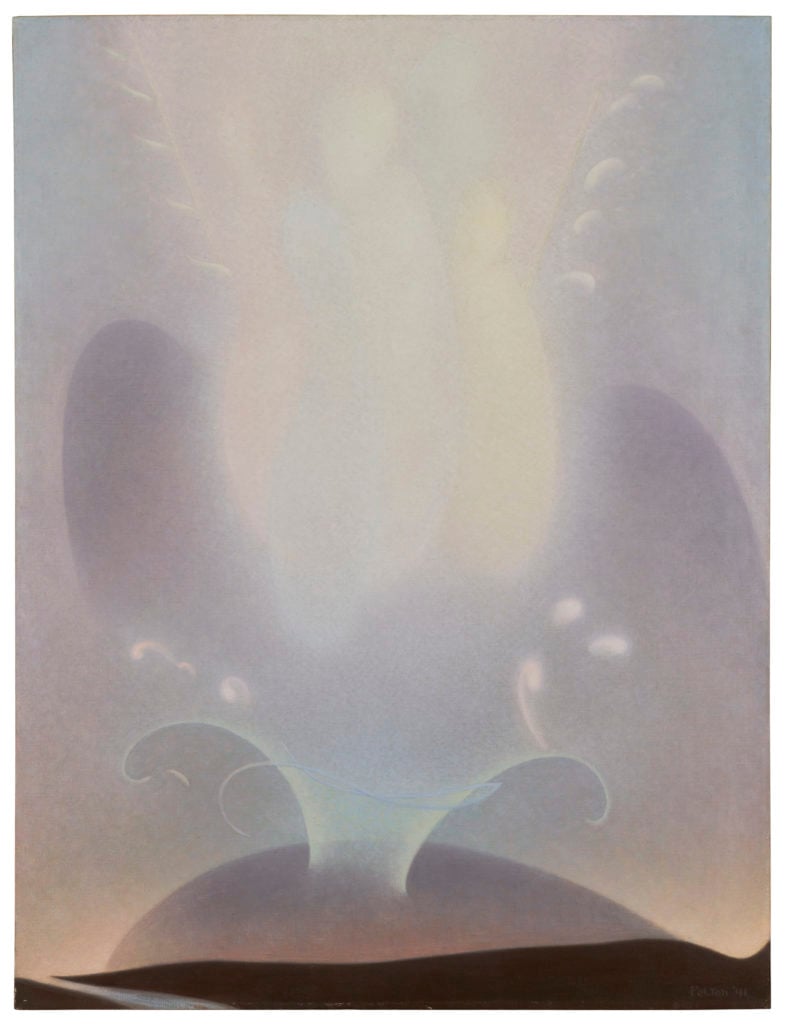
Agnes Pelton, The Blest (1941). Photo by Martin Seck, courtesy of the collection of Georgia and Michael de Havenon.
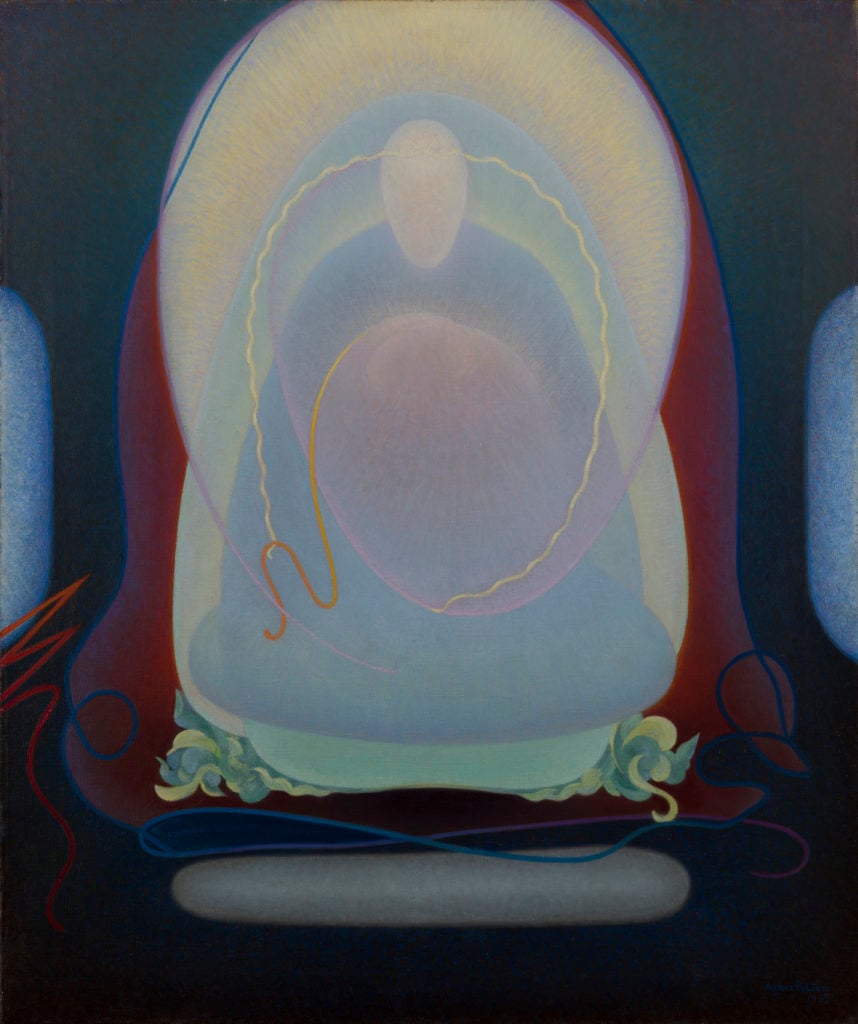
Agnes Pelton, Mother of Silence (1933). Courtesy of a private collection.
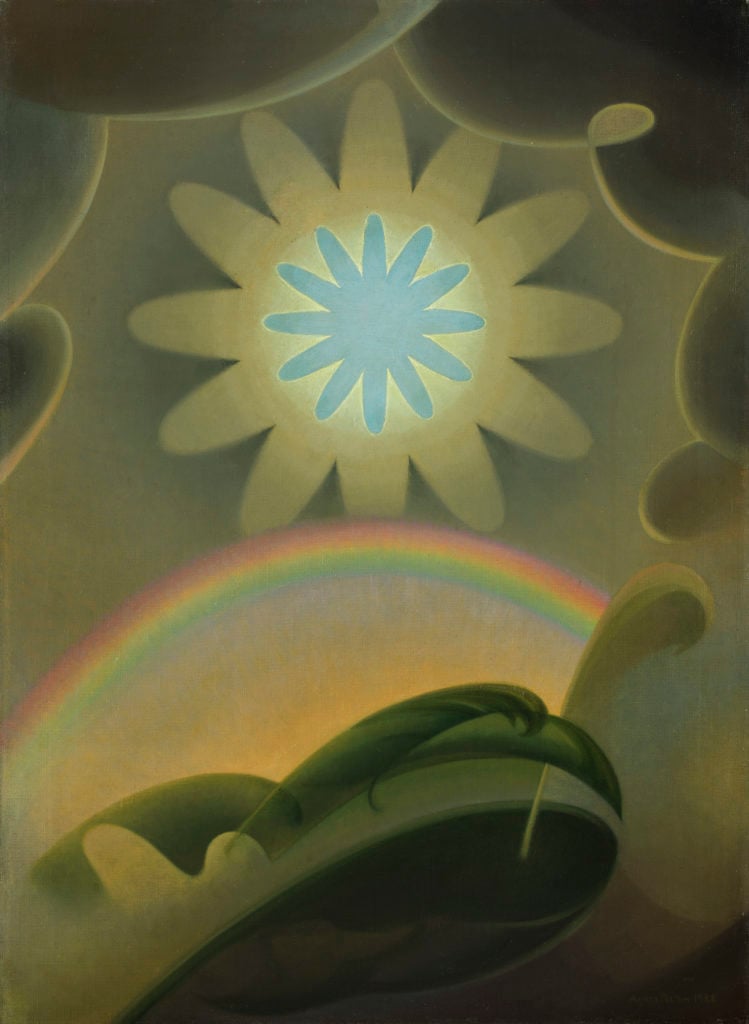
Agnes Pelton, Sand Storm (1932). Photo by Edward C. Robison III, courtesy of the Crystal Bridges Museum of American Art, Bentonville,Arkansas.
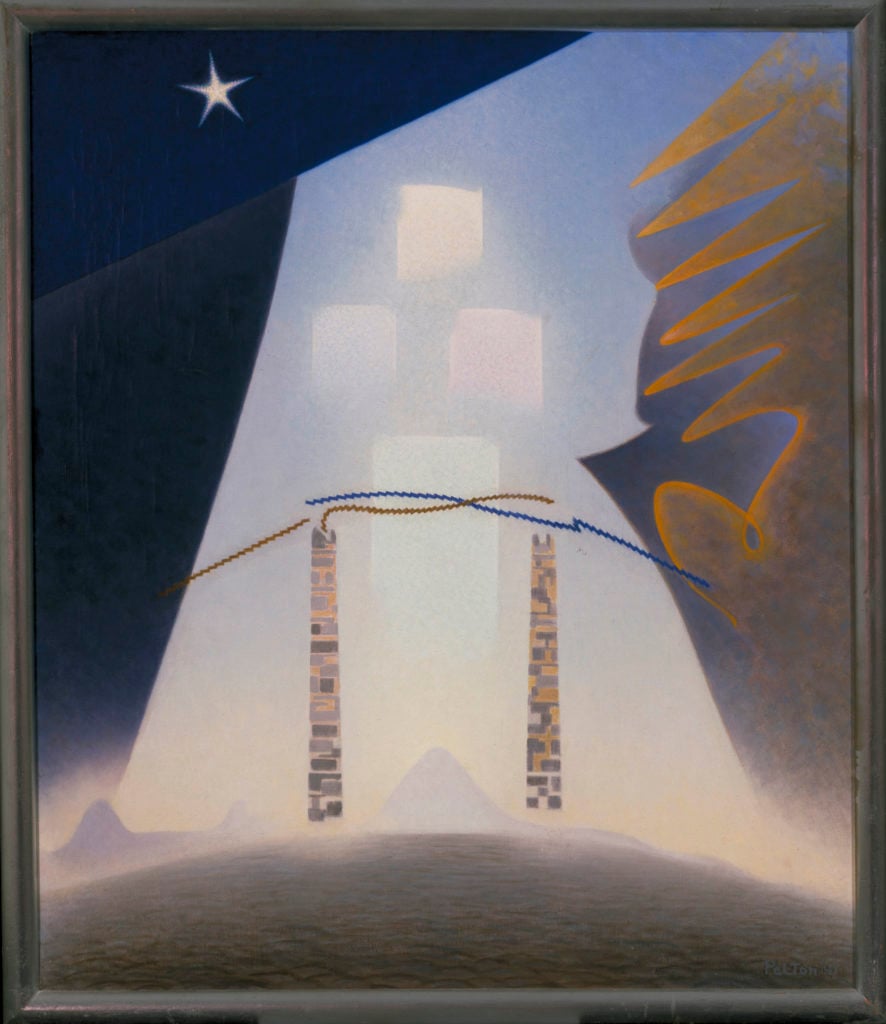
Agnes Pelton, Future (1941). Courtesy of Palm Springs Art Museum, 75th Anniversary gift of Gerald E. Buck in memory of Bente Buck, Best Friend and Life Companion.

Agnes Pelton, The Fountains (1926). ©Collection of Georgia and Michael de Havenon.
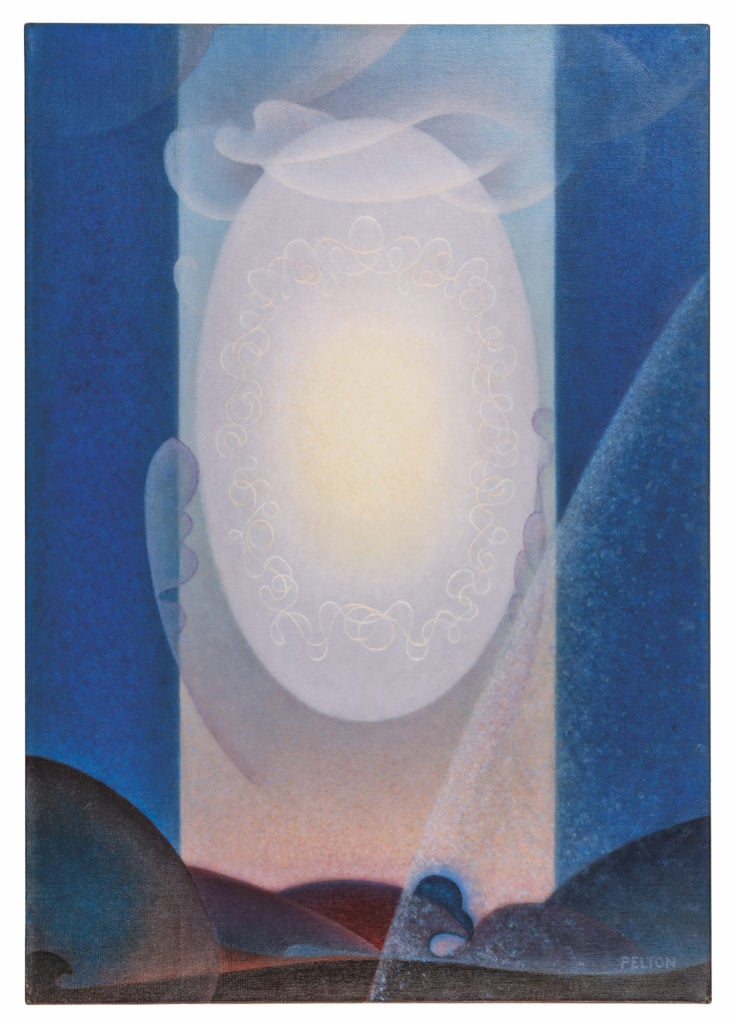
Agnes Pelton, Light Center (1947–48). Photo by Jairo Ramirez, courtesy of the collection of Lynda and Stewart Resnick.
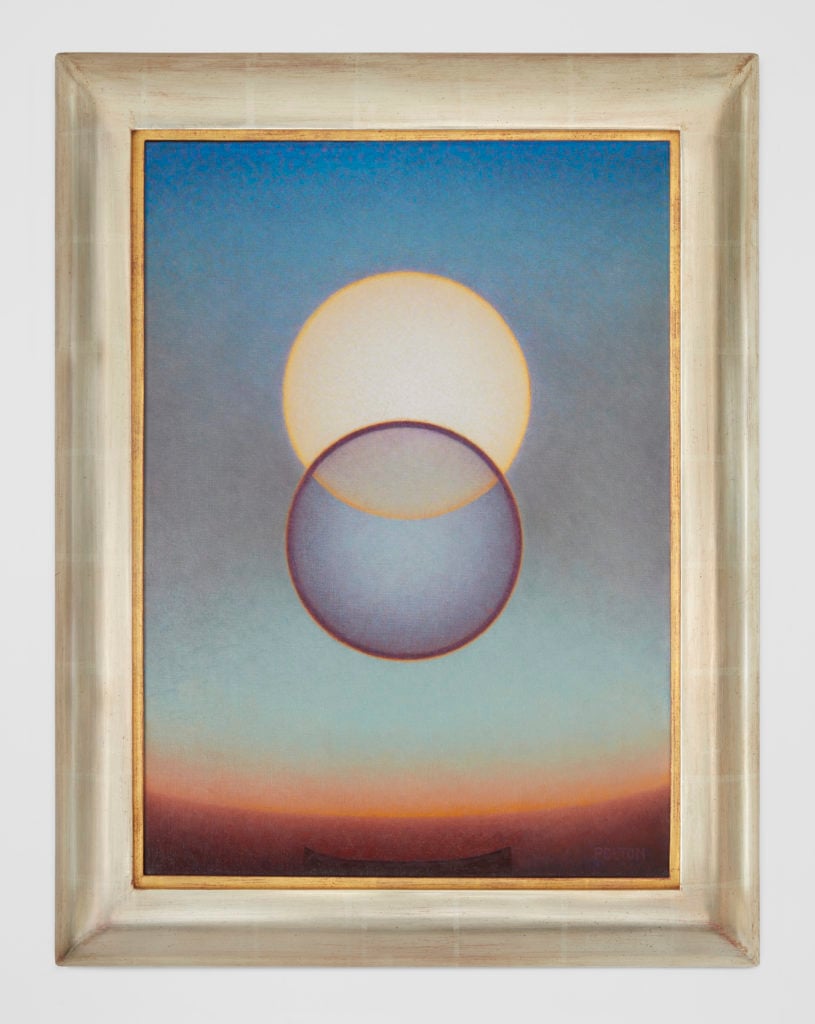
Agnes Pelton, Light Center (1947–48). Photo by Paul Salveson, courtesy of the collection of Mike Stoller and Corky Hale Stoller.
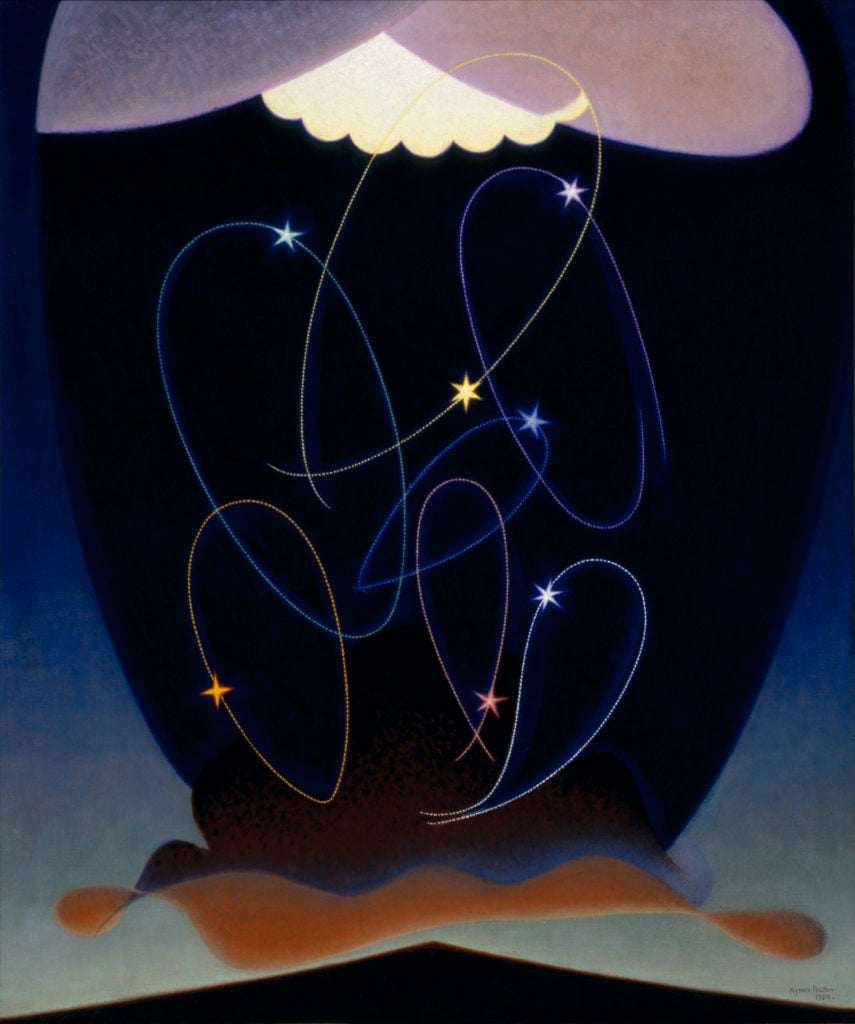
Agnes Pelton, Orbits (1934). Courtesy of the Oakland Museum of California, gift of Concours d’Antiques, the Art Guild of the Oakland Museum of California.
“Agnes Pelton: Desert Transcendentalist” is on view at the Phoenix Art Museum, 1625 North Central Avenue, Phoenix, March 9–September 8, 2019. The exhibition will travel to the New Mexico Museum of Art (October 3, 2019–January 5, 2020), the Whitney Museum of American Art in New York (March 13–June 28, 2020), and California’s Palm Springs Art Museum (August 1–November 29, 2020).
